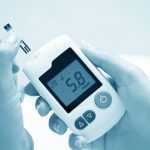In the healthcare industry, artificial intelligence (AI) refers to the application of computer systems that can perform tasks typically requiring human intelligence. Such technologies are leveraged to analyze vast datasets, make predictions, and provide valuable insights that support medical professionals in the treatment of patients. It enables the automation of repetitive tasks, such as medical image analysis, and helps in the discovery of patterns and correlations within patient data, ultimately leading to more accurate diagnoses and a better level of care.
Machine Learning as a subset of AI, is a specific technique that enables computer systems to learn from data and improve their performance over time without being explicitly programmed.
In recent years, the intersection of artificial intelligence (AI) and machine learning (ML) with medical devices has sparked a transformative shift in healthcare. This fusion of technology promises not only to enhance diagnostic accuracy but also to revolutionize treatment protocols, improve patient outcomes, and optimize healthcare systems.
AI/ML applications are starting to boom in the medical device and IVD industry and using 3 simple examples were
- To improve results generated by existing hardware solutions,
- Increase efficiency in medical laboratories,
- Facilitate at-home tests through smartphone applications
Background of AI and ML:
The first steps in the process towards achieving the goal of incorporating AI and ML into the healthcare industry in as safe a way as possible were taken by the Food and Drug Administration (FDA).
- Early 2010s: The groundwork for AI and ML applications in healthcare and medical devices was laid in research labs. Researchers started exploring AI algorithms for medical imaging and clinical decision support.
- 2016 to 2017: AI algorithms, particularly deep learning models, began making significant progress in interpreting medical images. For instance, in 2016, Google’s DeepMind developed an AI system for analyzing retinal images to detect eye diseases.
- 2018 to 2019: Wearable devices with AI capabilities, such as smart watches and fitness trackers, gained popularity for monitoring health data. These devices started to incorporate AI for more advanced features, including heart rate analysis and fall detection.
- 2019 to 2020: The U.S. FDA began issuing its first approvals for AI-powered medical devices. This included an AI-based diagnostic device for detecting diabetic retinopathy.
- 2020 to 2021: The COVID-19 pandemic accelerated the development and adoption of AI solutions in healthcare. Telemedicine and remote monitoring technologies became essential. AI was used for predicting disease spread, optimizing healthcare resource allocation, and developing COVID-19 diagnostics.
- 2022 to Present: Ongoing advancements in AI and ML are expected to continue reshaping healthcare. Innovations may include more AI-powered diagnostic tools, improved drug discovery processes, and increasingly sophisticated wearable devices with AI/ML features.
Market share of Al/ML –Enabled medical devices:
Over 500 machine learning or other artificial intelligence medical devices have now gotten FDA clearance or approval, with the first ones predating the year 2000. However, the sector must have truly started ramping up from 2010 onwards, as approvals/clearances increased exponentially beginning in 2016.

The therapeutic domain of radiology market share alone accounts for 75% of all devices, with cardiology and neurology rounding out the top three, accounting for 90%.
The first IVD-related therapeutic field is hematology, which accounts for little less than 3% of devices. Of course, MDs have a far bigger market share than IVDs, but some therapeutic areas are just offering a more natural setting for AI and ML technologies to be implemented.

Latest Guidance for AI and Machine Learning in Medical Devices:
- A management system standard in the vein of ISO 9001, ISO 13485 and ISO/IEC 27001, ISO/IEC 42001:2023 guides organisations creating or using AI towards good practices and also allows for certification by a certification body of an organisation’s AI Management System. ISO/IEC 42001 is structured to allow easier integration with other ISO Management System Standards into an Integrated Management System making it a sensible addition for AIaMD or SaMD manufacturers when developing their management system.
- The major AI-related development in the EU is the progression of the EU AI Act towards implementation after it was approved in March 2024.
- The FDA AI/ML-Based Software as a Medical Device Action Plan was released three years ago and includes an overview of their approach to Total Product Lifecycle for AI/ML medical devices.
Applications of AI and ML:
Some of the most prominent applications of AI and ML in medical devices were
-
Enhanced diagnostics
AI/ML-powered diagnostics involve the analysis of various medical data sources to assist in the early and accurate detection of diseases. This can include the interpretation of medical images (radiology, pathology, etc.), automated analysis of laboratory results, and the mining of electronic health records (EHRs).
For example, AI algorithms can detect subtle abnormalities or patterns in X-rays, MRIs, and CT scans that might be overlooked by human observers. This not only accelerates diagnosis but also reduces the chances of human error, potentially leading to more timely treatment and improved patient outcomes.
-
Personalized treatment
AI/ML can create personalized treatment plans by evaluating an individual patient’s medical history, genetic profile, and other relevant data. These technologies can identify specific factors that influence a patient’s response to treatments, including genetics, lifestyle, and co-existing conditions.
By tailoring treatments to the unique characteristics of each patient, healthcare providers can optimize therapeutic outcomes and minimize adverse effects. Personalized medicine is particularly important in fields like oncology, where treatments can be fine-tuned to target specific cancer mutations.
-
Real-time monitoring
Wearable medical devices with AI/ML capabilities, such as smart watches and biosensors, continuously monitor a patient’s vital signs like heart rate, blood pressure, and glucose levels. They can also detect anomalies in real-time and provide immediate feedback to both healthcare providers and patients.
This proactive monitoring is especially beneficial for individuals with chronic conditions, allowing for early intervention when necessary and reducing the need for frequent in-person medical visits.
-
Predictive analytics
AI-based predictive analytics utilize historical and real-time healthcare data to forecast disease outbreaks, patient readmissions, and other healthcare trends. Hospitals and healthcare systems can allocate resources more efficiently by anticipating and preparing for patient needs. For example, during flu seasons, predictive models can help hospitals adjust staffing and resource allocation to manage patient surges effectively.
-
Natural language processing (NLP)
NLP is used to develop AI-powered chatbots and virtual assistants that can understand and generate human language. In healthcare, NLP-powered virtual assistants can help with medical documentation, answer patient queries, and improve the patient experience. They are precious for streamlining administrative tasks, such as appointment scheduling, and providing patients with reliable information.
Conclusion:
AI and machine learning are long-term technologies, including in the medical device/IVD business. In reality, the FDA’s recently published list demonstrates that, while we are only at the start of this healthcare revolution, AI/ML is already providing practical solutions for a variety of target patient groups and usage scenarios.
If you are interested in learning more about how AI and machine learning can benefit your medical device/IVD business long-term, feel free to reach out to our team of subject matter experts at MakroCare.


